Audio Post Mix Analysis: “Lovesong” – Ian Stynes, Great City Post
Making a unified whole from the sum of its parts – that’s the challenge of audio post for indie film.
Ian Stynes was up to that task, mixing the critically praised 2016 release “Lovesong” at NYC’s Great City Post. Directed by So Yong Kim, the movie tells the tale of two best friends who find their friendship turning into romance just as one friend is about to marry.
As with most films, audio plays a key role in telling this intimate story. But with two distinctly different production styles employed for the picture, Stynes had a big sonic puzzle to assemble: “It was almost like getting two different movies,” he says.
Within this “Audio Post Mix Analysis,” you’ll learn a bounty of techniques from a post pro. How does he initially set a mix? What plugins does he look to for character that’s different from the rest of the pack — and what one plugin can he not do without? What are his “musts” for checking a mix? And what are his six tricks for overcoming ear fatigue? Prepare to find out all that out, and a lot more.
Mixer Name and Website: Ian Stynes, https://twitter.com/ianstynes
Mix facility: Great City Post NYC, Manhattan, in Chelsea on 26th street btwn 6th and 7th
Project Title and Media Type: “Lovesong,” Full length Feature Film, So Yong Kim – director
Sundance 2016 Lovesong Featurette:
My Suite Setup: At its essence, my philosophy is just to make it sound good. Simple I know. I’ve been lucky to work with a lot of great gear but in the end you have to just trust your ears. There is so much technology that we need to deal with these days – it’s easy to forget to “Just listen, damn it!”
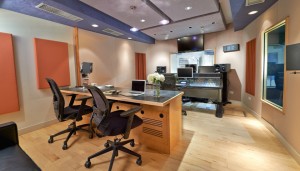
Studio A at Great City Post.
Knowing your mixing space is paramount to getting to where you can relax and trust your ears. Luckily I’m extremely comfortable with the space I work in. I learn the gear or the plugin to the point where it makes sense, but I usually try to keep the mix moving – keep the creative energy flowing. I don’t like to get into plugin menus unless I really have to or think it can really help the sound.
I have gotten very fast with the mixing console (Avid D-control) and I do think that’s important. That said, I try to use plugins that have a good vibe right off the bat – maybe use a few weird and interesting ones to add some character if I can (it’s easy to forget about the character.) Softube, Soundtoys, EMI, Crane song, Slate – these companies all make superb plugins that have a unique thing going on with each of them.
At Great City Post we have three 5.1 audio rooms that are mirrored in functionality – same plugins, workflow etc. The idea being that we can move the projects around to any of the rooms and get to work quickly without any issues. That said, each room is a little different. Studio C is smaller than the two other main rooms. Studio A and B are great-sounding and I trust how a mix will translate to a bigger space coming out of these rooms. Studio B was built years ago – and sounds amazing. Studio A was built by Fran Manzella and also sounds superb.
They are not huge theaters with speakers behind perforated screens etc… but I’ve gotten to know those rooms very well over the past nine years. For certain projects I like to bring the mixes to a big theater for a listen-down at the end to make sure they’re translating. Honestly, it’s mostly for the clients – to reassure them that this mix will work in a big space. I’m always very happy with the results.
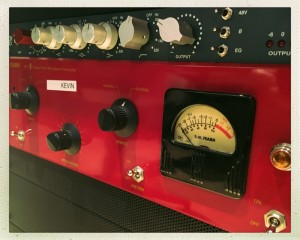
D.W. Fearn is among the outboard that Stynes appreciates for post.
In any case, we have three Avid consoles – 2 D-Controls and 1 D-Command. You really don’t need much outboard gear in post. We have a couple of great preamps though (Rupert Neve 5015s, SSL Xlogic channel strip, SSL Alpha VHD, DW FEARN VT-1, UA 6176, Vintech X731) and some nice mics (U87s, TLM 103, 414s, Sennhesier MKH 416s, Brauner Valvet).
We used to do a lot of music work at the studio so we are lucky to still have a couple really nice preamps but we have sold off most of the other hardware. We have a lot of great plugins (Waves, Softube, Slate, Crane Song, Soundtoys, Audioease, EMI). Keeping the mix in the box is not only essential but it’s gotten to the point where it sounds really good.
My Lovesong Connection: Bradley Rust Gray and So Yong Kim have made a bunch of movies together – they usually switch off with directorial duties but are very involved with each other’s films. I’ve worked with them on two of their other films – For Ellen (starring Paul Dano and Jon Heder) and The Exploding Girl (starring Zoe Kazan). So directed Lovesong. Thankfully they keep coming back!
Deliverables: It gets tricky with movies – distribution companies want everything under the sun.
I often find myself in a position where my deliverables list is pretty extensive. Like with music, you need to make sure your mix translates well on many different platforms – which usually just means “make it sound good and it will work.” On bigger budget movies you will have the luxury of mixing for theatrical, then adjusting the mix for home entertainment etc… but most of the time one mix will need to work for everything.
With this film, as with most, I started with surround and then folded down to a LtRt stereo file. You have to set up your template in such a way that you can create stems for all the different elements – dialogue, sound effects, music etc… Then most productions will come back and ask for a fully-filled “M&E,” which is a version of the film that has all the dialogue removed but every effect still intact.
In a fair amount of cases this requires a bit of editing/Foley work/additional sound effects to add in the effects that will be missing when the production that has the dialogue is removed.
Pre-Pro Go: Brad and So edit their films themselves and are very involved with adding lots of sound from production early on. They are extremely smart about it. I wish other indie filmmakers would take a page from their book and think about sound as much as they do.
They will record extra sounds on set knowing we can use it in the mix later on. And in many cases, they will go through the raw audio that they knew they recorded and add in some on-set sounds to beef up the edit.
Raw materials: Lovesong was shot in two very different stages – which works out well because that is how the story unfolds.
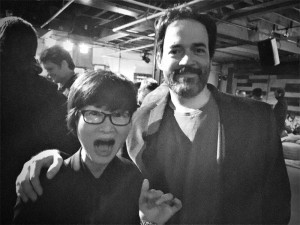
(l-r) “Lovesong” director So Yong Kim and GCP’s Ian Stynes.
The first half of the film was shot with an extremely stripped-down crew. Besides the two leading roles (played beautifully by Riley Keough and Jena Malone), the movie also stars Brad and So’s kids Jesse Ok Gray and Sky Ok Gray – I think they were 3 and 6 years old when it was filmed. In order to get the 3-year-old to be natural (and to capture a certain amount of intimacy) they kept the crew stripped down to the essentials – camera, sound, actors and them. They had a framework to follow and just filmed. A lot of this half of the film was done in their house. This half of the movie was beautifully shot by cinematographer Kat Westergaard. There are many instances in the first half of the film where special moments happen because of this approach. As beautiful as it is the sound is definitely rougher because of this more guerilla style of shooting.
The second half of the film was shot with a traditional-size larger crew in Nashville. The cinematography for this half was expertly handled by Guy Godfree. There were many actors, so there was the opposite situation to contend with – lots and lots of mics in every scene to choose from. It was almost like getting two different movies. Our job was to give them the sonic cohesion of one production.
We received an aaf from an Avid project that had all the individually recorded production microphones on set, the music from the composer and, as I just mentioned, some extra sounds and ambiences that they gathered at the time of filming and were unique enough to help out with the story.
We added additional sound effects that were missing, ambiences throughout, Foley for specific moments (i.e. footsteps, body movements, etc…) and no ADR on this film. On movies like this I try and make all the dialogue that was recorded on set work as best I can. The actors weren’t really available to do ADR.
There was some rough patches of production sound – it took a lot of surgery to make it all work – thank you iZotope RX 5! The iZotope stuff is so essential for this type of cleanup work. Like with many new technological advances I find myself saying “I don’t know what I did before this was around”.
Initial Pass: Now’s a good time to talk about the unusually amazing team of people I get to work with at Great City! I’ve worked with the same couple of folks for a while now and we’ve gotten into a good routine.
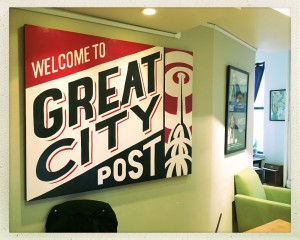
The team was integral to the audio for “Lovesong.”
Usually there are five or six of these people who would be involved on a movie like this but for this film we did things a little differently. We kept it very simple. I sound supervised the whole project. Matt Schoenfeld first expertly added a layer of sound design and effects, edited the dialogue and gave the mix an initial pass. Jay Culliton was amazing as always – doing some additional sound editing/Foley work. And then I had two more weeks to work on it before the clients came in with me for the final one-week mix.
There was a lot of “dirty” dialogue – more than usual – conversation outside by highways, dialogue in driving cars and as I mentioned earlier we really weren’t able to ADR for various reasons. By the end we got it into a great spot but there’s always that moment along the way where you say to yourself, “Is this going to work? I’m not sure it’s going to get to where it needs to be.” But it always does! I was proud of the work we all did for Lovesong.
Mixing It! I always spend a healthy amount of time starting off a mix by finding the proper gain structure and template for a project. In other words, getting all the general plugin settings to be hitting correctly.
Usually, the audio for production was recorded at a similar level. A little time spent getting the compressors to all hit and control the peaks correctly will go a long way to giving you a cohesive mix. I also have EQ and reverb settings for certain elements like the recorded Foley that will give me a good starting point.
I pay a lot of attention to what is on my busses as well — I started off recording music and I think that sensibility has stuck with me in post. I can’t help but try and emulate the sound of mixing through an analog console.
I also want the mixes to have a little character. Everyone has Pro Tools and if you are not careful your mix can easily sound generic and flat. I love the Waves plugins but I try and get some other flavors in there as well. Something different, you know? Slate plugins are very unique – the VCC and VTM collections really bring that analog sound to a digital mix in a real way – not just by adding hiss or distortion.
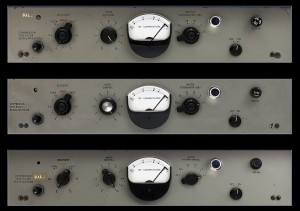
The Abbey Road EMI RS124 is one of Stynes’ prized plugins.
One of my favorite plugins is no longer supported and I’ve been coming to terms with the fact that I have to find something else – it’s the Abbey Road EMI RS124. That compressor has such a unique sound on the busses – somehow heavy and transparent at the same time when set right – very much adding that glue to everything. I’ve been getting back into the Crane Song Pheonix II plug and have been really happy with it. Of course Waves is essential. Their C360 surround compressor is important to make sure you never hit digital 0.
At home I have had a T.C. Electronics Finalizer 96k for years and swear by its multiband compression and limiting capabilities. The Waves L3LL Multimaximizer multiband compressor/limiter has very similar algorithms and might be the one plugin I could not live without – it sounds great and is also extremely essential for taming peaks in a harsh unforgiving digital world.
Oh yeah, and Soundtoys! I can’t forget them – they are the best, most unique plugins and not just for creating wacky sound design (which they are very good at) but completely utilitarian when need be. The EchoBoy is great for any kind of stages or speaker emulation – outdoor scenarios. The Decapitator is also perfect for mangling and sourcing audio – radios, TVs etc.
Audioease Speakerphone is great, but I usually find that you have to cheat sounds when you are sourcing them – especially music. You don’t want them to actually sound like they would in real life usually. Many times you want to highlight or enhance these sounds – maybe give them a bigger-than-life quality. In Lovesong there is a great series of scenes at a bachelorette party in several different bars and clubs. We added all the music and it’s nice to really be able to manipulate how and where the music is coming from. There is a big moment in particular where the music turns into score and then goes back to source. A combination of EQing and Soundtoys enabled me to get it all where I wanted it… that and Altiverb. For reverb the Audioease Altiverb plugin is great. I love the Softube Tsar-1 as well for unique sounds.
I’ve been going on about software but really in the end – as I mentioned earlier – it’s all about how it sounds, right? One of the best qualities I think a mixer can have is the ability to hear a mix with fresh ears. Ear fatigue happens quickly and can confuse you fairly quickly if you don’t get good at dealing with it. It’s easy to go down a bad road and get stuck on the details.
I’ve picked up a couple little tricks over the years to get my head into the space of, “How would I be hearing this in the audience for the first time?” Empathy for your ears. First of all, the golden rule most experienced mixers know is to keep listening at a constant spl level – 85 in a big theater or 79 in a small room – it doesn’t really matter too much – just keep it consistent. I like to dim the mix 20db every once and a while to see what sticks out in extremely low levels.
Years ago I got to sit in on a mix with the great music mixer Andy Wallace. He started out his mix at full blast – getting drum sounds etc… – really loud. Once he got full-frequencied lush sounds he turned the mix down and then never really turned it back up. It was so low I could barely hear it on the couch in the back. Hearing a mix at a low volume can really tell you a lot about what is sticking out.
Having a set of additional smaller crappier speakers to fold down to is a must for me (I use Avantones, Auratones and Yamaha HS8s, but really any home stereo speaker will most likely do). They can be placed anywhere in the room really and ideally they are in an awkward place – this is such a great reference for my ears. It’s kind of a worst-case scenario reality check.
Another big thing for me is to actually watch the film as a whole from start to finish without stopping several times during a mix – this is very important. It’s easy to spend so much time working on little chunks that you can get lost on how that little chunk fits into the bigger picture.
My absolute favorite tool for resetting the ears is to listen down to a mix first thing in the morning – this is something I’ve kept from my music mixing days as well. It’s not always convenient but your ears will never hear the mix more true than first thing in the morning – it’s like magic. I always trust that first listen and I always have a notepad ready.
Also, I know it sounds obvious, but just taking a break every once in a while can clear your head to make better decisions. I used all these tricks on Lovesong. So is very particular about what she wants – she has a strong and unique vision – it’s always a lot of fun to work with her.
Revisions Decisions: I think it’s important to get the client in the room with you for at least a couple of days at the end of the mix. It’s also a fun part of the job for me.

“Lovesong” premiered at Sundance 2016.
When you sit in a room with someone for a week or two, a common ground is forged and a nice connection is usually made. With film you usually are working on something that they most likely have literally put their blood sweat and tears into. I have worked with Brad and So on three movies now and we have formed a great working and personal relationship. So is an amazing director to work with – she is extremely inclusive and sharing in the creative process with the sound even though she has a such strong and unique vision.
In any case, we got the film to where we were all happy and then they took home the stereo print and sat with it for a few weeks. They had a couple little tweaks which is to be expected – everyone knows what a movie should sound like in their personal space.
It’s Live! The interesting thing about working on a narrative feature film is that the general audience really shouldn’t be thinking about all the work you put in to get the sound to where it is.
Of course there are specific sound moments that shine but in many cases people will glance over a section that you agonized over for a half a day. If they heard the “before” audio they would most likely be taken out of the story and the moment. It’s a funny thing but it is strangely rewarding knowing that you have pulled off a small amount of magic.
Thankfully the clients were very happy with the sound. It premiered in competition at Sundance 2016 this year and sounded great! The movie has been getting really positive reviews as well.
— Ian Stynes, Chief Audio Engineer, Great City Post
Please note: When you buy products through links on this page, we may earn an affiliate commission.







Shane McGill
March 14, 2016 at 2:07 pm (8 years ago)Great read- thanks to all!